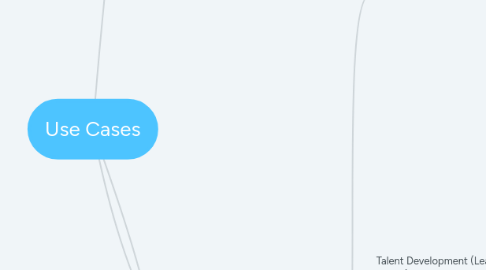
1. Government
2. Employer
2.1. Talent Acquisition (Hiring) (not out of the gate)
2.1.1. To acquire new talent from outside.
2.2. Talent Development (Learning) - budget spread Digitize the eixsitng $$
2.2.1. To keep employees happy by providing learning opportunities.
2.2.2. To help employees do better on the current job.
2.2.2.1. I see the moral of some employees are going down. They are frustrated that they did not get a promotion, but the trueth is they are not ready to move to the next level. Their managers are too busy to coach them to gain the skills needed to move up. How can we help?
2.2.2.1.1. Would be great to show employees what are the current skills gap and how they can fill those gap to attain the promotion. I can use my L&D budget to pay for the courses directly beneficial for the employee. But I also want to know if those courses are actually effective.
2.2.3. To move employees from overcrowded skills to in demand skills (Talent Mobility - Learning).
2.2.3.1. Many departments are asking to find people to fill open positions, but cannot find good talent from outside. Maybe we can train juniors quickly to fill those positions internally.
2.2.3.1.1. My boss wants to know if it is indeed hard to hire from outside.
2.2.3.1.2. For the jobs hard to fill from outside canddiates, who are the closest to fill those positions?
2.2.4. On the job training (edcast, degreed)
2.2.5. Leardership Development (enterprise-led)
2.2.6. Tuition Assistant Program (TAP) - Dedicated budget to take formal higher education courses. (e.g. Guild)
2.2.7. Upskilling/Reskilling Programs
2.3. Talent Transition (firing staff)
2.3.1. A lot of companies have automation strategy and ready to let people go.
2.4. Talent Mobility and Succession Planning (succession of a position)
2.5. Workforce Planning
2.5.1. What jobs will be needed in the future?
2.5.2. What type of people we have?
2.5.3. Upskilling/Reskilling Programs
2.6. Leader owned L&D (manager has a budget to spend, no corporate or enterprise ownership of it) - for this use case, we go to managers
3. Employee
3.1. Individual learning
3.1.1. Explore what jobs are in my reach.
3.1.1.1. Employee-Explore-Occupation
3.1.2. Explore what I need to learn.
3.1.2.1. Employee-Explore-Skill
3.1.3. Identify courses to take to get to where I want to go.
3.1.3.1. Employee-Pursue-Skill
3.1.3.2. Provider-SignUP
3.2. Corporate L&D
3.2.1. To become more desirable employee
3.2.1.1. I haven't been promoted. I want to gain skills to do better on the job so that I can be promoted.
3.2.1.1.1. Employee-Explore-Skill
3.2.1.1.2. Employee-Pursue-Skill
3.2.2. To move to more desirable jobs within the company
3.2.2.1. I have been doing this job for a long time and I am getting bored. If possible I want to find something new within the same company, but if not, I will look outside. There are some job openings, but seems very different from what I am doing now and not sure if I am qualified.
3.2.2.1.1. Employee-Explore-Occupation
3.2.2.1.2. Employee-Pursue-Occupation
